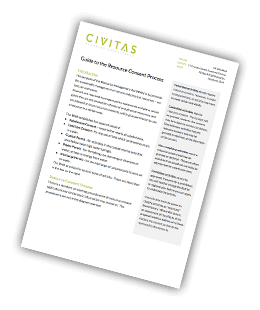NPS-UD and MDRS: Further Update on Auckland Council's Response
By Iain McManus
This article summarises the key decisions made by Auckland Council’s Planning Committee on 4 August 2022 for the plan changes to be notified on 18 August 2022 to give effect to the National Policy Statement on Urban Development 2020 (“NPS-UD”) and the Medium Density Residential Standards (“MDRS”) and other provisions contained in the RMA Amendment Act 2021.
For brevity, this article focuses on the decisions that go beyond or change previous decisions of the Committee and, as such, should be read alongside my earlier articles (in sidebar to right) for a complete overview of the changes about to be notified.
Qualifying Matters
A qualifying matter (“QM”) allows Council to provide for less intensive development than it would otherwise be required to enable under the NPS-UD or MDRS.
The Planning Committee has already endorsed numerous QMs but in its latest meeting endorsed QMs for the following as well:
- Areas with water or wastewater constraints;
- Areas connected to a combined wastewater network;
- Part of Balmoral/Mt Eden with no ability to connect to the public stormwater system and constrained ground soakage capacity;
- Two sites of significance to mana whenua (Pukekiwiriki Pa in Red Hills and Pararekau Island in the Pahurehure Inlet); and
- Beachlands, due to transport constraints.
The Committee also agreed that further work should be undertaken on a late request from Vector to include a QM requiring safe distances from power lines and power boxes. Officers have authority to include this as a QM if they consider it to be appropriate.
It appears that a restricted discretionary activity resource consent will be required for developments of more than one dwelling per site and for any subdivision creating additional lots within the above (and presumably the previously endorsed) QM areas.
I note that the QM maps provided to the Committee for the first two QM areas indicate that these areas will be extensive and will also apply to significant areas already zoned for intensification (including areas already zoned for terrace housing and apartment buildings).
As a consequence, it appears that the notification of these QMs will make it harder to intensify within many areas already zoned for intensification which is a perverse outcome given the intent of the legislation and NPS-UD to enable (rather than disable) more intensive development.
Other Plan Provisions
The latest recommendations endorsed by the Committee also confirm that:
- A new Low Density Residential zone will be proposed for areas where certain QMs apply including special character areas;
- Additional plan provisions will be proposed to allow Council to assess transport effects when residential developments are proposed;
- Additional plan provisions will be proposed to further restrict development within “Height Sensitive Areas” under the existing Volcanic Viewshafts overlay;
- New standards and changes to existing standards will be proposed for developments of four or more residential units to ensure better urban design outcomes (see additional comments below);
- Changes will be proposed to the matters of discretion and assessment criteria for developments of four or more residential units to expand Council’s ability to manage design;
- The existing Riddell Road and Albany 3 precincts will be deleted and 29 other precincts will be amended in response to the NPS-UD and/or MDRS; and
- Subdivision variation controls will be removed from the plan, mainly because they will not be required alongside the new suite of QMs.
New Standards for Four or More Residential Units
As noted above, the Committee has endorsed the notification of new standards and amendments to existing standards for developments of four or more residential units. These standards will:
- Enable more height closer to street frontages;
- Require larger outlook areas for developments higher than three storeys;
- Require buildings to “address the street” to reduce visual dominance, shading and privacy effects on adjacent sites;
- Require common outdoor living spaces for developments of 20 or more dwellings to enhance on-site amenity in higher intensity living environments;
- Strengthen the definition of “Landscape Area” and require deep soil areas / canopy tree(s) based on the size of the site; and
- Require provision of well-designed on-site waste storage.
Related Plan Changes
Finally, the Committee has endorsed four plan changes to be notified at the same time as the “Intensification Planning Instrument” containing the above changes.
Plan Change 79 will amend:
- Chapter E27 Transport of the Unitary Plan to lower the trip generation thresholds for residential development, require accessible parking for most activities in most zones, include new (and very detailed) bicycle parking requirements for residential developments, include new loading space and heavy vehicle access requirements for residential developments, include new (and very detailed) private pedestrian access provisions, require ducting for electric vehicle charging and require speed management measures for residential developments. See my earlier article on these changes.
- Chapter E24 Lighting to require artificial lighting of parking and pedestrian access areas to meet relevant technical standards.
- Chapter E39 Subdivision – Urban to align the transport provisions in this chapter with similar provisions in the Transport chapter.
- Chapter M Appendices to incorporate a number of new documents by reference and include parking demand guidelines.
Plan Change 80 will amend the Regional Policy Statement to add references to “well-functioning urban environment” (as used in the NPS-UD), resilience to the effects of climate change, and qualifying matters.
Plan Change 81 will add 11 historic heritage places, including four historic heritage areas, to the Historic Heritage Schedule (Schedule 14).
Plan Change 82 will amend seven items already included in the Historic Heritage Schedule (Schedule 14).
If you would like any advice re the Intensification Planning Instrument or any of the other plan changes that will be notified on 18 August, please contact me as soon as possible, as once the plan changes are notified we will have a very short timeframe within which to review the plan changes and lodge submissions.

